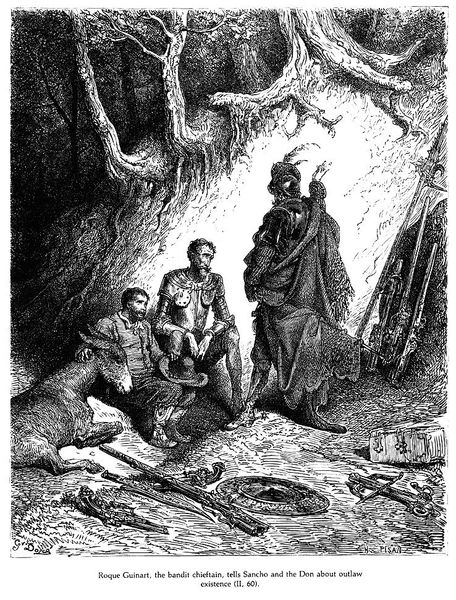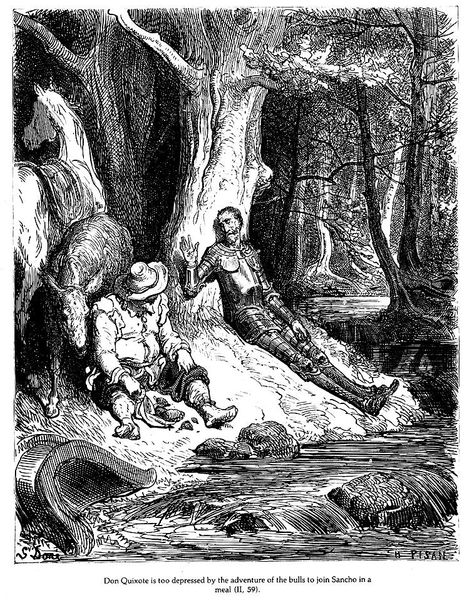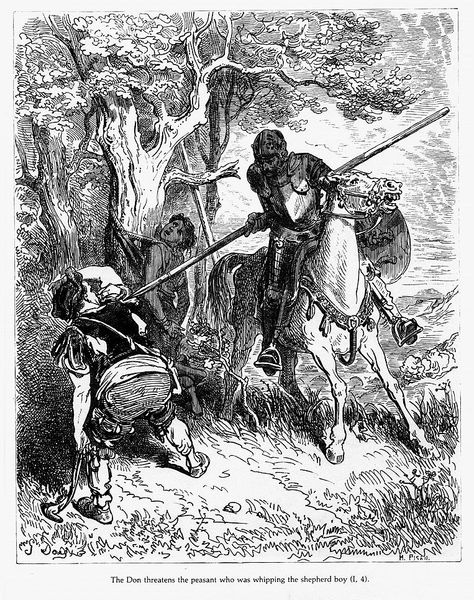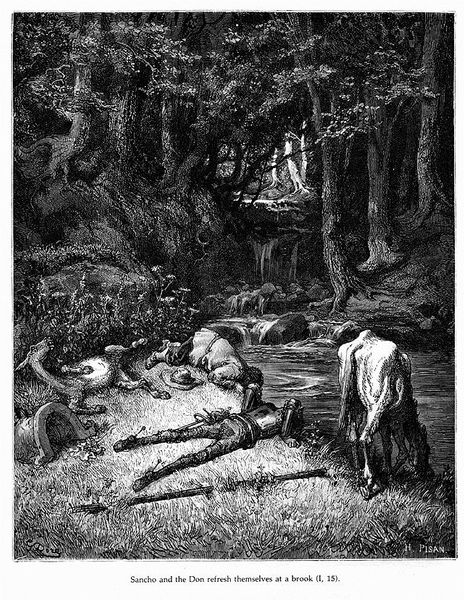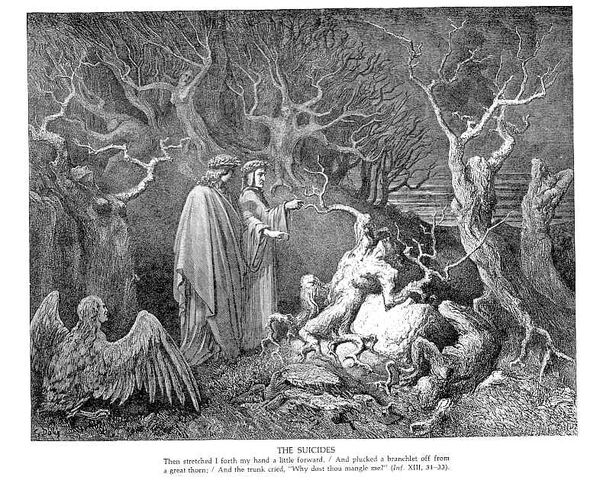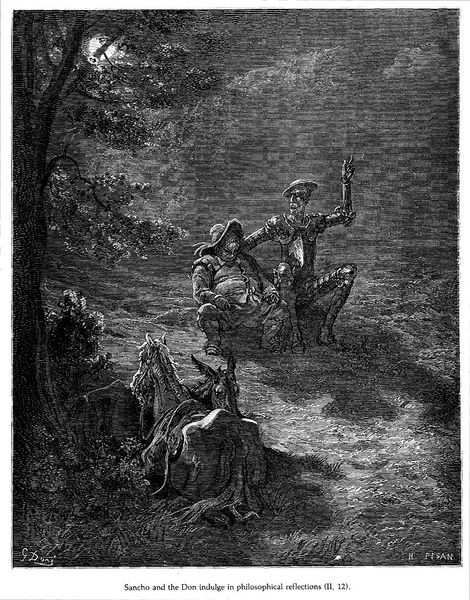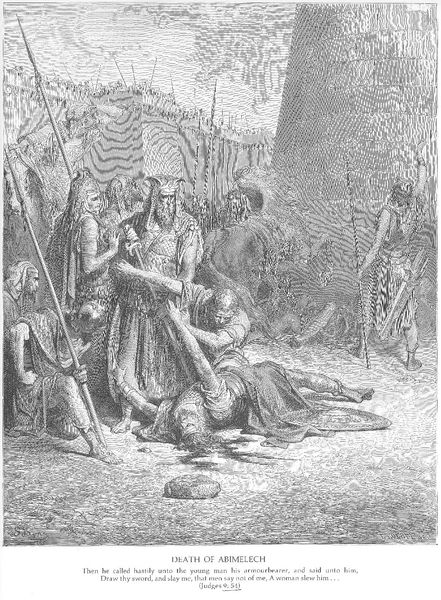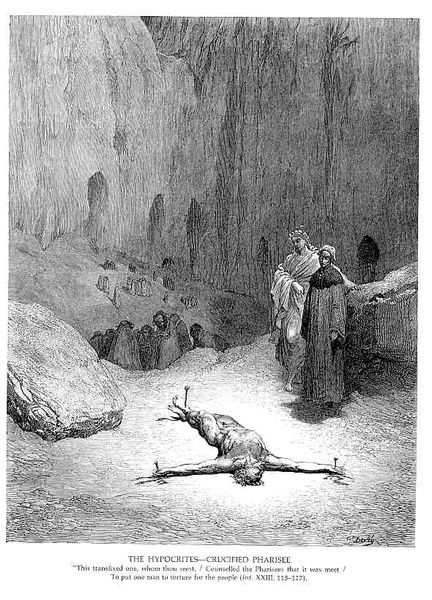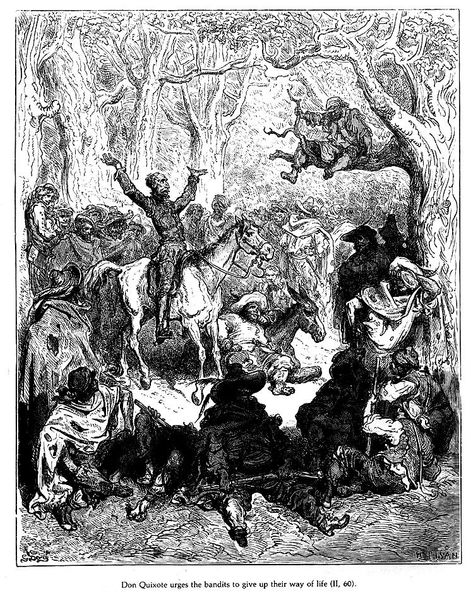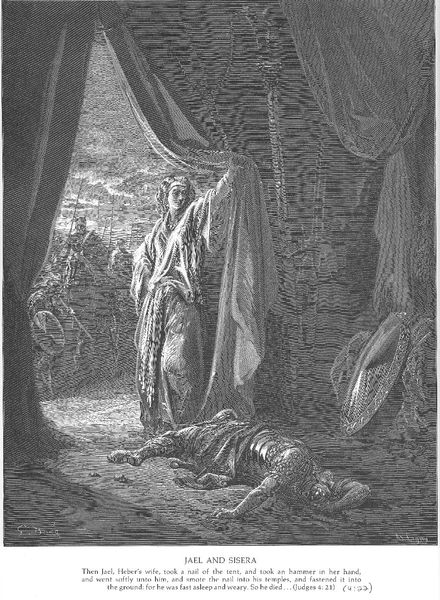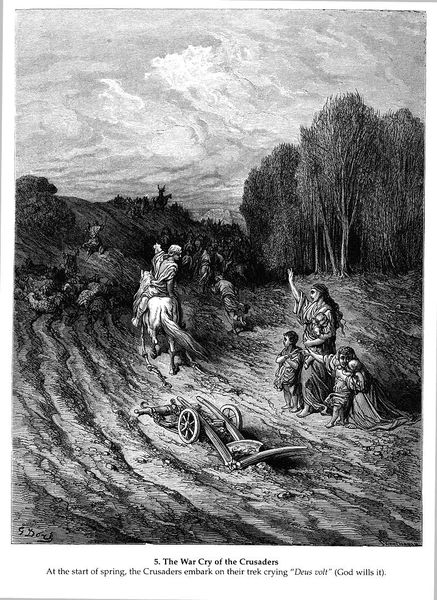
drawing, etching, photography, ink, woodcut
#
drawing
#
narrative-art
#
etching
#
landscape
#
figuration
#
photography
#
tree
#
ink
#
romanticism
#
woodcut
Copyright: Public domain
Curator: This is Gustave Doré's "Don Quixote." While we don't have a precise date for it, it is one of many etchings and woodcuts he produced to illustrate Cervantes's novel. Editor: My first impression is that of profound contrast. Look at the deep shadows, the textures—the trees seem almost menacing, enveloping the figures. A raw, unsettling energy permeates the scene. Curator: Yes, Doré truly uses light and dark to dramatize the narrative. Let's consider Sancho Panza's self-flagellation. It is not just a physical act but a symbolic one rooted in religious asceticism. Editor: Precisely! The act of whipping carries echoes of Christian penance, but here it's twisted to serve Don Quixote’s delusional quest. Sancho’s pain is a currency meant to liberate Dulcinea from enchantment. Consider the serpent-like form of the whip, its suggestion of temptation, and even corruption. Is it really a purifying force? Curator: Doré masterfully uses woodcut and etching techniques to capture texture and form, notice the way he renders the material reality of the trees, they act as more than just background they serve almost as an oppressive, physical constraint on the characters. It speaks to the physical hardships and the labor inherent in their journey. Editor: Absolutely. It reinforces the earthy, almost grotesque quality of the scene. This contrasts starkly with the idealized romanticism of Quixote's fantasies, as if he is showing the labor needed to attempt romantic aspiration. Curator: Ultimately, Doré's images heightened the story's satire of societal expectations of labor and leisure. The choice of woodcut further solidifies this point due to it being a printmaking medium, a lower form of creation, in contrast with Quixote's "higher calling". Editor: The symbolic weight and cultural memory packed into the image are staggering. Dore turns this moment from Cervantes’ novel into a rich visual tapestry. Curator: Indeed, looking at the processes that inform this scene alongside its immediate impact sheds new light on the narrative itself. Editor: Seeing the history and weight in Dore's visual language provides a chilling understanding of what happens when reality bends to idealism.
Comments
No comments
Be the first to comment and join the conversation on the ultimate creative platform.
